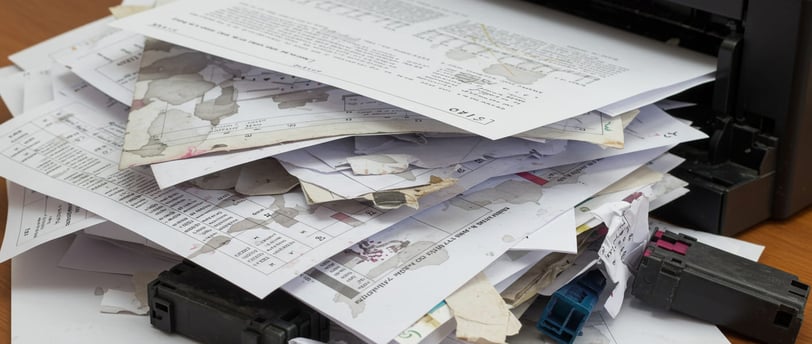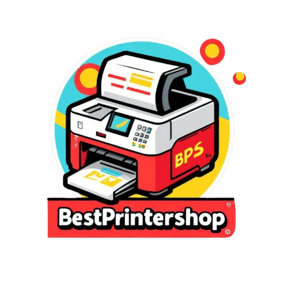Dangers of Cheap Handheld Inkjet Printers: A Complete Buyer's Guide
Discover the hidden risks of cheap handheld inkjet printers, from poor print quality to safety hazards. Learn what to look for and how to make smarter purchasing decisions.
5/11/20255 min read


Portable handheld inkjet printers have taken the market by storm, promising convenience and flexibility for on-the-go printing needs. These pocket-sized devices allow users to print on various surfaces with a simple swipe, making them appealing for both personal and business use. However, the market is flooded with cheap alternatives that might seem like a bargain at first glance but often lead to regret.
As the demand for these portable printing solutions grows, so does the number of budget options with questionable quality and safety standards. These cheaper models might save you money initially, but they can pose significant risks to your printing projects, electronic devices, and even your health.
This comprehensive guide explores the genuine dangers of purchasing low-cost handheld inkjet printers and provides practical advice for making informed buying decisions.
The False Economy of Cheap Handheld Printers
Short Lifespan and Poor Durability
One of the most immediate risks of buying cheap handheld inkjet printers is their notoriously short lifespan. While quality models typically last for several years with proper maintenance, budget options often break down after just a few months of regular use.
Most bargain printers use substandard components that aren't built to withstand frequent handling or the occasional bump or drop that portable devices inevitably face. The internal mechanisms, particularly the printhead and ink delivery systems, tend to fail prematurely, leading to:
Clogged nozzles that can't be cleaned
Misaligned printing mechanisms
Battery failures
Cracked casings
Broken USB ports or charging connections
Many users report having to replace their cheap handheld printers within 3-6 months, ultimately spending more than if they had invested in a quality model from the start.
Unreliable Print Quality
Print quality is perhaps the most obvious area where cheap handheld printers fall short. Budget models typically offer:
Lower resolution (often below 300 DPI)
Inconsistent ink distribution
Poor colour accuracy
Smudging and bleeding
Inability to print on certain materials
These quality issues make cheap handheld printers unsuitable for professional applications or any situation where presentation matters. Business cards, labels, or product packaging printed with low-quality devices can create a negative impression of your brand or products.
Health and Safety Concerns
Toxic Ink Formulations
Perhaps the most alarming risk associated with cheap handheld inkjet printers is the potential exposure to harmful chemicals. Budget manufacturers often cut corners by using inks with:
High levels of volatile organic compounds (VOCs)
Uncertified dyes and pigments
Heavy metals like lead and cadmium
Formaldehyde and other preservatives
These toxic substances can cause respiratory issues, skin irritation, and eye problems with prolonged exposure. Some cheap inks have even been found to contain carcinogenic compounds that pose long-term health risks.
Quality printer manufacturers invest significantly in developing inks that meet international safety standards, including:
RoHS compliance (Restriction of Hazardous Substances)
REACH registration (European chemical regulations)
Various consumer safety certifications
Cheap alternatives rarely undergo such rigorous testing and certification processes.
Electrical Safety Hazards
Poorly manufactured handheld printers can present electrical safety hazards due to:
Substandard batteries prone to overheating
Inadequate circuit protection
Poor insulation
Non-compliant chargers and adaptors
There have been documented cases of cheap handheld printers catching fire during charging or even during operation. The risk increases when these devices are left unattended or charged overnight.
Technical Limitations and Compatibility Issues
Limited Software Support
Quality handheld printers come with dedicated software applications that offer:
Regular updates and bug fixes
Compatibility with the latest operating systems
User-friendly interfaces
Technical support
In contrast, cheap alternatives typically provide basic software with numerous limitations:
Outdated interfaces
Lack of customisation options
No regular updates
Poor compatibility with modern devices
Limited or no technical support
Many users of budget handheld printers report frustration with software that crashes frequently or fails to connect to their devices.
Device Compatibility Problems
Another significant risk is incompatibility with your existing technology ecosystem. Cheap handheld printers often:
Support only older Bluetooth standards
Have limited compatibility with iOS or Android devices
Work only with specific older operating system versions
Lack Wi-Fi connectivity options
These limitations can render the printer useless if you upgrade your smartphone or computer, forcing you to purchase a new printer regardless of whether the existing one still functions.
Hidden Costs of Cheap Handheld Printers
Expensive Proprietary Consumables
Many manufacturers of budget handheld printers employ a "razor and blades" business model, selling the device cheaply but making their profit on proprietary ink cartridges or refills that cost significantly more than the printer itself.
These proprietary consumables often:
Run out quickly
Cannot be refilled
Are not available from third-party suppliers
Cost nearly as much as a new printer
Some users report spending three to four times the initial cost of the printer on ink within the first year of ownership.
Wasted Materials and Time
The unreliability of cheap handheld printers leads to considerable waste:
Failed prints requiring multiple attempts
Materials ruined by smudging or bleeding ink
Time lost troubleshooting connection or software issues
Projects abandoned due to printer limitations
For businesses, these inefficiencies can translate to significant financial losses and missed deadlines.
How to Identify Quality Handheld Printers
Research the Manufacturer
Before purchasing a handheld inkjet printer, thoroughly research the manufacturer:
Look for established companies with a history in printing technology
Check for a proper website with detailed product information
Verify the availability of customer support
Look for published technical specifications
Be wary of brands that appear only on marketplaces without independent websites or those with limited online presence.
Check for Certifications
Quality handheld printers will advertise their compliance with various safety and quality standards:
CE marking (for European markets)
UL certification (for North American markets)
FCC certification (for electronic devices)
RoHS compliance (for hazardous substances)
IP ratings (for water and dust resistance)
The absence of these certifications is a red flag that the product may not meet basic safety standards.
Read Authentic Reviews
Take time to read genuine customer reviews from verified purchasers:
Look beyond the star rating to read detailed feedback
Pay attention to comments about longevity and reliability
Note any mentions of customer service experiences
Be skeptical of products with thousands of perfect reviews but few detailed comments
Professional reviews from technology websites and printing industry publications can also provide valuable insights into printer performance and durability.
Making the Smart Investment
Total Cost of Ownership
When comparing handheld printer options, consider the total cost of ownership rather than just the initial purchase price:
Estimated lifespan of the device
Cost of ink or cartridge replacements
Availability of third-party consumables
Warranty coverage
Cost of potential replacements
A quality handheld printer priced at £150-£200 that lasts for years may be far more economical than a £50 model that fails after a few months and requires expensive proprietary ink.
Consider Your Specific Needs
Different applications require different printer capabilities:
For professional business cards or product labels, prioritise print quality and colour accuracy
For industrial marking, focus on durability and compatibility with various surfaces
For casual home use, balance cost with reasonable quality expectations
Understanding your specific requirements will help you determine which features are essential and which are merely nice to have.
Conclusion
While the allure of a cheap handheld inkjet printer can be strong, the risks associated with these budget devices often outweigh the initial savings. From poor print quality and compatibility issues to serious health and safety concerns, the true cost of a cheap printer extends far beyond the price tag.
By investing in a quality handheld printer from a reputable manufacturer, you'll enjoy better performance, lower long-term costs, and peace of mind regarding safety standards. Research thoroughly, read authentic reviews, and consider the total cost of ownership before making your purchase decision.
Remember that printing technology is an investment in your productivity and the quality of your output. Choose wisely, and your handheld printer will serve you reliably for years to come.
Insights
Explore the latest in printer technology and tips.
Resources
Support
contact@bestprintershop.com
+918920029543
© 2024 BestPrinterShop . All rights reserved.
